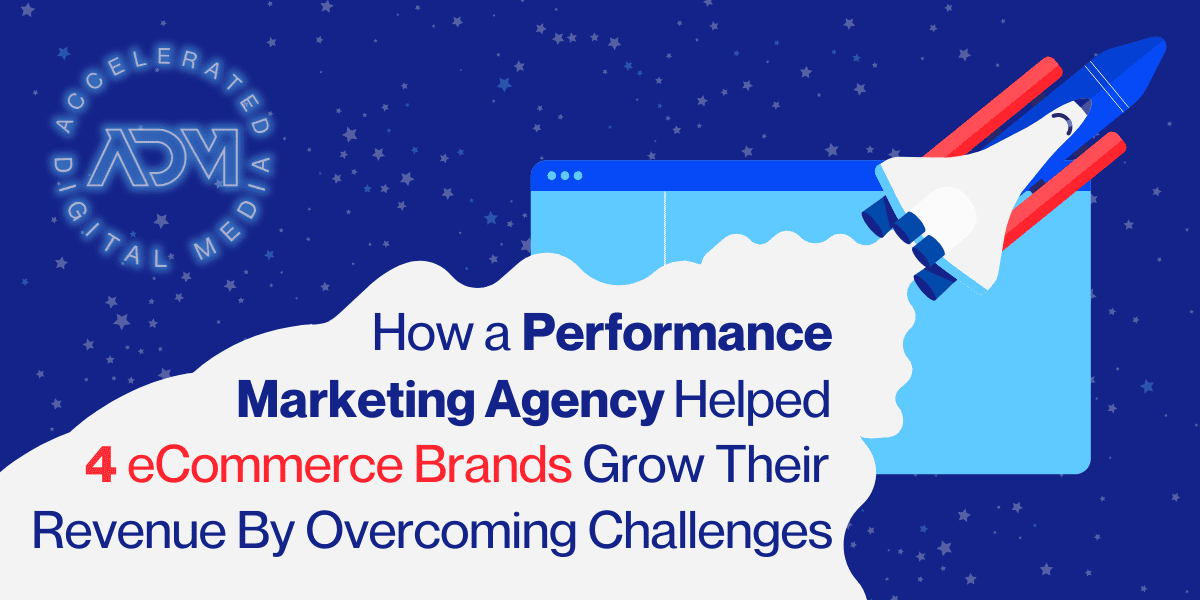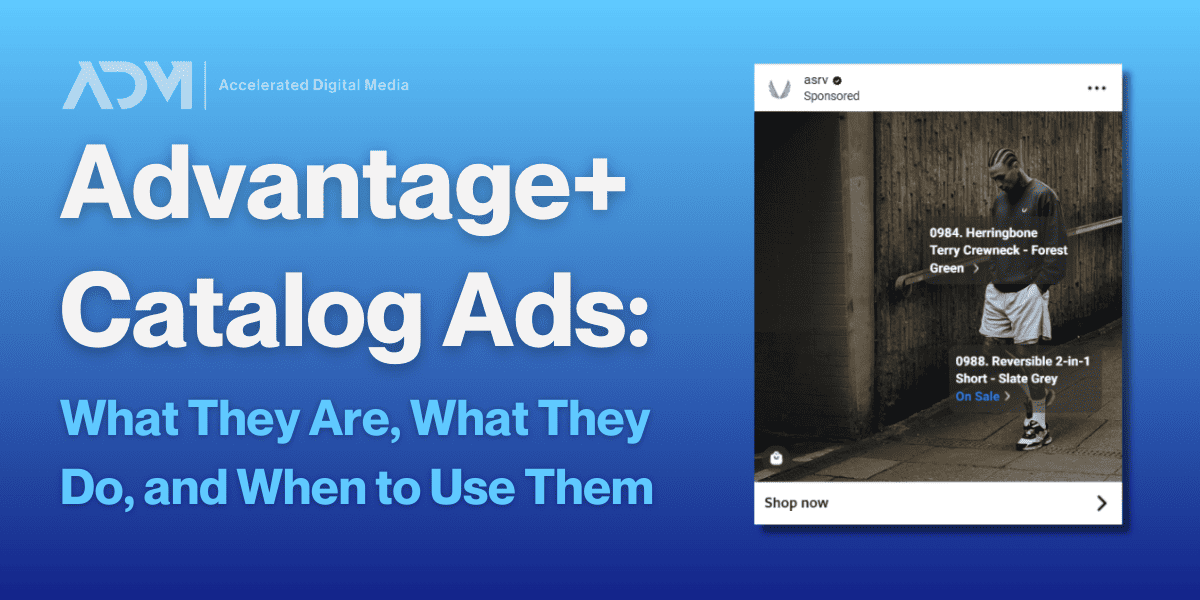As the year rolls into Q4, brands are already deep into planning or even deploying their early social media marketing strategy. For many eCommerce brands, the holiday season is make or break—meaning holiday marketing should be a year-round focus.
Whether you’re late on your planning—like so many holiday shoppers—or extremely early on next year’s plan, there are several fundamental principles to keep in mind about holiday marketing on social media. In this blog, we’ll dive into both practical tips and overarching approaches to help you better plan for holiday sales success.
Building Momentum Before Black Friday
Throughout the year, it’s important to start building up customer interest in your products—while also growing your own retargeting lists for more personal outreach. There are quite a few ways to do this, but ADM we find particular success with:
VIP or early access sales: ADM has found great success with targeted campaigns aimed at smaller, select groups of individuals. These targeted lists have included various segments, such as email subscribers, rewards program members, app users, and other highly engaged audiences. By focusing on dedicated customers or existing warm prospects, you can generate excitement and anticipation before a sale or promotion officially launches to the public. The personalized nature of these campaigns helps to strengthen customer relationships, encouraging repeat business and fostering a sense of exclusivity and connection with the brand.
Countdown messaging: Creating anticipation before Black Friday and Cyber Monday (BFCM) can be effectively achieved through cohesive countdown messaging across multiple channels. Use both organic and paid social media to build momentum with countdowns helps generate excitement for upcoming sales.
Encouraging action: An incredibly valuable component of your holiday strategy (and overall eCommerce marketing strategy) is encouraging users to take actionable steps. That allows you to capture interest for future retargeting. Providing prospects with the option to sign up for an email list or follow the brand on social media helps the brand to build an interested audience that can be notified as soon as the sale begins. Being specific with sale deadlines—such as listing exact dates and times when the sale ends—is more effective than using vague terms like “ending soon.”
Using campaign objectives to feed remarketing: How you define success in an awareness campaign can contribute to how well effective it can be as a prospect generation tool. For instance, using campaign objectives like video views rather than just reach objective enables you to retarget those who watch the video for more than 15 seconds (thru-plays) with specific sale ads once the promotion goes live.
Designing Black Friday-Ready Creative
Even though it’s a time for extravagant ads and excessive ad spending, the right approach for Black Friday social media creative is often to keep things simple and straightforward, leaving no guesswork for the customer.
Sales and promotions should be bold, front-and-center, and easy-to-understand. This might sound like a no-brainer, but how often have you ever found yourself doing rough mental math to figure out how much something you want will cost, minus some percentage off? Most people don’t like doing math when they don’t have to—that’s what we want to avoid.
The paid social ad creative that is most effective during this vital holiday sales period has promotions like percentage off bold and center. Once the user reaches the site they should be able to see the sale prices via strikethrough pricing, leaving no room for guesswork (and often, less for hesitation).
While every brand wants a splashy, distinctive holiday message, it doesn’t hurt to still use what has always worked. One of the biggest mistakes we see brands make during Black Friday/Cyber Monday is only using brand new creative to promote the sale. The brands that perform the best also use their historically high-performing creative, which can be updated with holiday sale banners or other messaging tweaks.
A good holiday creative strategy can embrace both old and new. Lean into what you know already works while also launching net-new, completely sales-focused creative will generally deliver the best results during this competitive sales season. Giving your audience and the algorithm options of sale creative leads to higher volume and better efficiency.
When you do make all-new creative content, ensure there is variety. ADM finds brands that diversify their creative mediums and formats often outperform advertisers who begin the holiday season by turning down their other campaigns and trying to start anew with a whole slate of new campaigns and media.
Managing Spend During Black Friday and Cyber Monday
Everyone knows that holiday marketing and sales begin long before Black Friday and Cyber Monday, but that’s still when interest peaks and brands typically see the largest concentration of sales—so it’s important to manage marketing strategy and spend in real time.
A cautious media buyer typically avoids increasing a campaign’s budget by more than 20% per day, driven by a fear of triggering the learning phase, which can happen with larger budget changes. However, for most eCommerce brands, Black Friday and Cyber Monday (BFCM) is not the time for a conservative approach. Instead, this is the moment to significantly ramp up.
When scaling spend to maximize Black Friday/Cyber Monday success, it’s crucial to act quickly and assertively. Don’t leave money on the table by sticking to conservative budget increases. During these events, it’s vital to work with marketing experts who can use the incoming data from the sale to guide how aggressively you push your campaigns. There is often a lag in attribution data, meaning it’s vital to know how to read other indicators and respond very quickly once the data catches up—so you know when it’s time to go big.
Maintaining Marketing Momentum After Black Friday
To keep momentum high, it’s important to continually remind customers of the limited time they have to take advantage of discounts. Phrases like “last call” or “final day(s) of sale” are powerful tools for creating even more urgency, as they signal that the opportunity to save is about to disappear. ADM often launches fresh last call style ads in the final 2-3 days of a sale that lasts 7-14 days.
It may seem counterintuitive, but it’s wise to launch fresh evergreen (non-sale) creative before the sale period ends. This proactive approach helps avoid the typical post-Black Friday/Cyber Monday slump by keeping your brand top of mind as the holiday season progresses.
Laying on new urgency drivers like “order by [X date] to receive by Christmas” creates a sense of immediacy, encouraging shoppers to act quickly. supporting continued momentum post-sale. This strategy not only sustains the excitement generated by your Back Friday ads, but also positions your brand to capture last-minute shoppers and secure a strong finish to the holiday season.
Additionally, data indicates that being specific with deadlines—such as listing exact dates and times when the sale ends—is more effective than using vague terms like “ending soon.” This precision helps to clarify the urgency, prompting customers to act immediately rather than risk missing out. By strategically including end dates in all sale ads and updating your messaging throughout the sale period to be more end of sale focused, you can drive consistent engagement and ensure that the momentum remains strong all the way through to the end.
When to Begin Planning Your Holiday Social Media Strategy?
Because the holiday season is such a pivotal event for many eCommerce brands, holiday strategy needs to be considered all year round. As one holiday season unfolds, it’s wise for brands to already be thinking about their plan for next year. Pay close attention to what strategies are resonating with your audience and which messages and creative are not performing and will need to be improved or replaced for the next year (or even right away). Many creative changes, like the models or backdrops you use for video ads, may take significant time to strategize and secure.
Starting holiday planning early ensures that a brand can seamlessly incorporate the insights and lessons from the previous year into the new strategy, leaving no chance for important takeaways to be overlooked or forgotten. It can also more proactively assign budget and resources (time and people) based on what areas will need the most attention the following year.
At ADM, we like to take detailed notes on the successes and challenges throughout the holiday season so we can go into the next year with a list of potential changes to help our clients implement. Being proactive enables us to refine our approach and execute more impactful campaigns year after year. If you’re looking for a dynamic marketing partner that prioritizes continual improvement year-over-year, reach out to the team at ADM today for a consultation or paid social audit.




